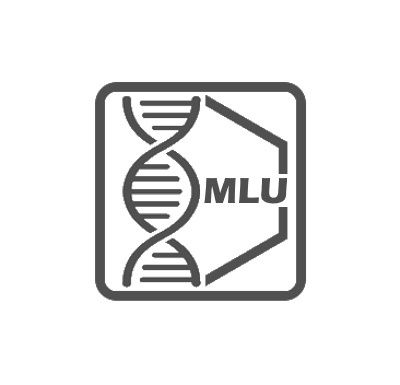Andrea Sinz
Prof. Andrea Sinz

Institute of Pharmacy/Pharmaceutical Chemistry
Wolfgang-Langenbeck-Straße 4
06120 Halle (Saale)
phone: +49 (0) 345-55 25170
andrea.sinz@pharmazie.uni-halle.de
High-Mass Q-TOF Mass Spectrometer - Analysis of Protein Complexes up to 3.5 Mega Dalton
The High-Mass Q-TOF mass spectrometer was installed in January 2013 (see photo).The instrument is used for structural characterization of the protein complexes studied in the Sinz lab as well as in various cooperation projects.

Mass spectrometer
The protein systems under investigation include:
1. Laminin/Nidogen Interaction
The heterotrimeric 800 kDa-glycoprotein laminin is the main non-collagenous component of basement membranes, which controls cellular activities, such as adhesion, migration, differentiation, and apoptosis. Laminin is essential for basement membrane formation by interacting with itself as well as with other basement membrane components. We are studying the interactions between laminin with nidogen-1 and -2 by chemical cross-linking and mass spectrometry (MS). Complementary studies of non-cross-linked laminin-nidogen complexes will give insights into topology, affinity, and stoichiometry of the complexes.
2. p53
P53 is one of the most prominent tumor suppressors, which is present as tetramer under physiological conditions. It is a DNA-specific transcription factor regulating the expression of specific target genes in response to genotoxic stress. In addition to chemical cross-linking experiments, we will analyze the intact p53 tetramer by native MS.
3. FocA/pflB Interaction
A recently discovered protein complex, composed of the pentameric aquaporin-like formate channel FocA and the glycyl radical enzyme pyruvate-formate lyase(PflB) that generates formate in E.coli, is analyzed with the High-Mass Q-TOF instrument. The project is conducted in close cooperation with Prof. Gary Sawers, Institute of Microbiology.




